A new decade brings forth new ideas, but for much of this year’s Consumers Electronics Show in Las Vegas, it was less about innovation and more about restoration.
Buzzwords like “connectivity” and “self-care” were seen and heard throughout the three-day event, which took over the Las Vegas Convention Center and a number of adjacent hotels. From Sony to Samsung, brands spoke about their desire to “bring people together,” unveiling products that promised to make life easier, happier, and less chaotic.
And while development of artificial intelligence, VR and robotics continues at a rapid pace (there were entire sections dedicated to AR), even those technologies are taking a decidedly more human point of view. Look no further than LG, where the company’s president and chief technology officer unveiled a roadmap for artificial intelligence development that highlighted four levels of AI experience (AIX): efficiency, personalization, reasoning and exploration. The future, it seems, is not just about discovering new roads but also about smoothing out the path you’re already on.
From smart glasses that actually work with your wardrobe to 8K TVs that showcase movies in a whole new light, here are 11 of the best things we saw at CES.
LG OLED ZX Real 8K TV
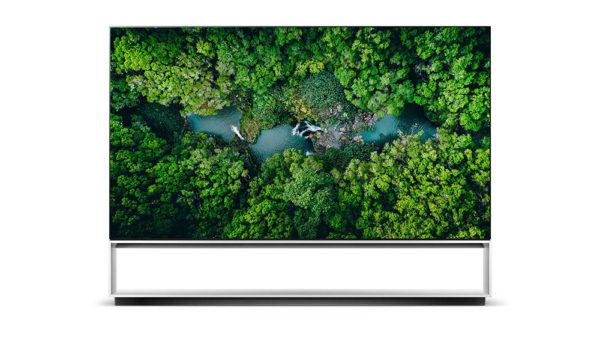
Courtesy of LG
The rise of 8K TVs continues to be a huge trend, which these cinema-quality displays promising four times more detail than traditional 4K, with crisper, sharper and more vivid images. LG has been a leader in the push towards 8K, and the Korean electronics giant took another leap forward this week with the release of their .
Among all the 8K TVs we tested at CES, the OLED ZX (available in 77” and 88” models) had the best viewing experience, with dazzling, life-like images and incredible detail no matter your vantage point. That’s thanks to LG’s spiffy Alpha 9 Gen 3 Processor, which leverages artificial intelligence to continuously upscale and enhance picture quality to its most pristine levels. Other features, like noise reduction and the processor’s “AI Picture Pro” technology, deliver more accurate and consistent images, with the internal AI able to distinguish faces on screen to fine-tune facial features and sharpen outlines.
But it isn’t just about turning up the intensity of your images. That’s why we liked LG’s “filmmaker mode,” which lets you remove any automatic upscaling or digital enhancements to see a film or show the way it was created––not an artificially boosted version of it. Sometimes, a little subtlety can be just as powerful.
The units arrive in stores later this year; expect prices in the mid-five figures.
Samsung Q950TS QLED 8K TV
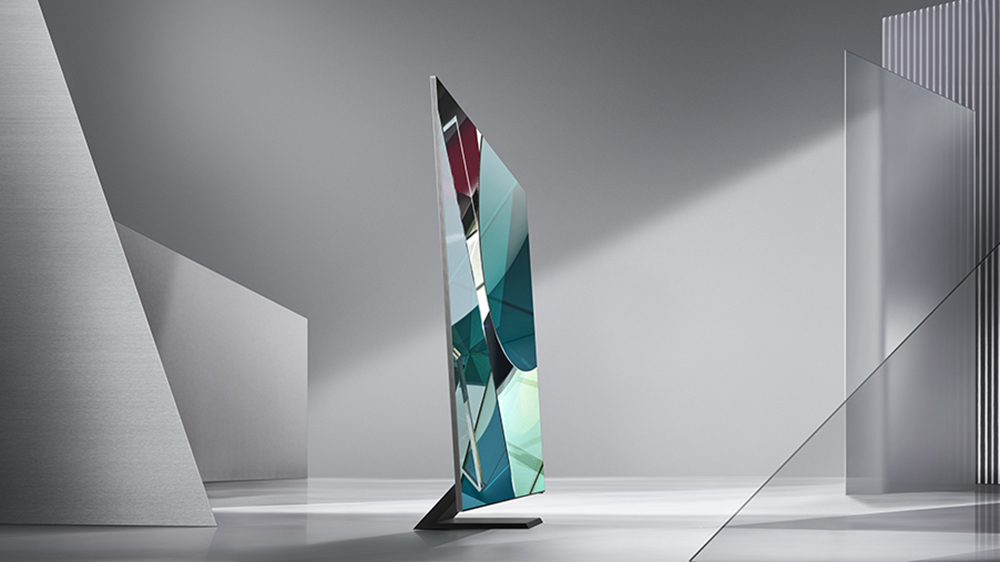
Courtesy of Samsung
Samsung also unveiled a new 8K entry this week, with the announcement of its . This was the thinnest model we saw at CES, measuring just 15 mm at the sides, with a completely flat back panel. Like some of the new cell phones in the market, the unit also features an end-to-end screen; the display takes up 99% of the front panel, virtually eliminating that black border that is usually found at the edges.
Picture quality was comparable to the rest of the 8K TVs launched this week––that is to say, pretty spectacular––and much of that is thanks to the Q950’s next-generation Quantum Processor 8K and Samsung’s “Adaptive Picture” technology, which monitors the lighting environment to ensure consistent contrasts and clarity, even when the brightness levels change in the room.
An additional note: Samsung says this is the first TV set in the industry to feature surround sound audio––I like soundbars, but with this TV you wouldn’t really need to add one (though Samsung did debut its new Q Series Soundbar, which is able to pair the audio from both the TV and soundbar to create a “moving,” multi-dimensional soundscape). Pricing and release dates are still TBD, though the unit is expected to launch later this year.
Amazfit HomeStudio Exercise Station
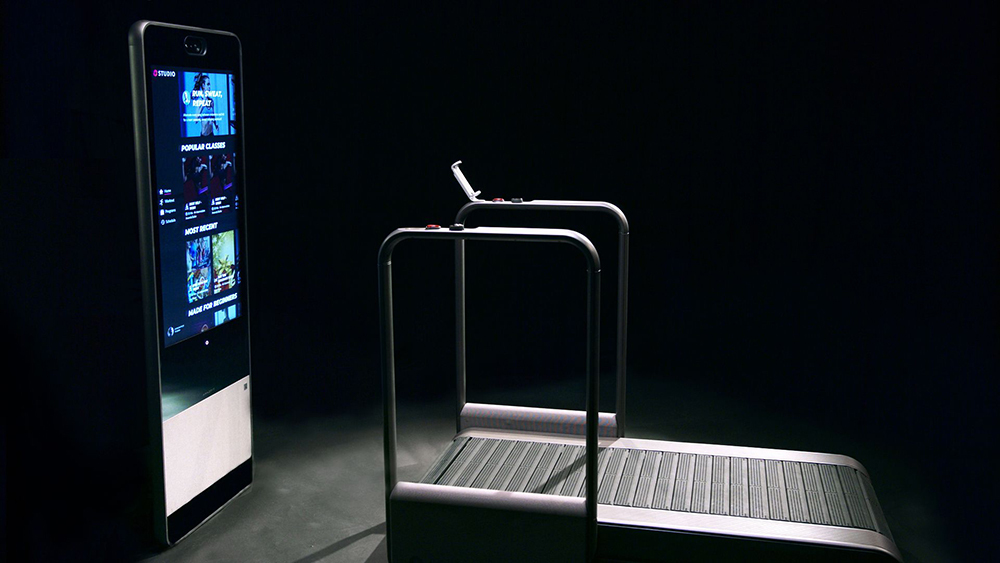
Courtesy of Amazfit
“Exercise tech” continued to be a hot trend with dozens of companies offering up new “fitspo” for 2020. The buzziest release was Huami’s “,” which combines a high-end slat-belt treadmill with a 43-inch smart screen, to deliver the most connected and versatile home fitness setup we’ve seen yet.
Think of it as the next step up from your Peloton bike. While Peloton promotes a spin studio experience (though the company recently launched a treadmill as well), the Amazfit’s “SMART GYM HUB” connects you to more than a thousand classes that incorporate everything from treadmill work, to body sculpting, stretching and yoga. The classes can all be viewed and accessed through the floor-length HD smart screen, which functions as a regular mirror when the screen is turned off. A 3-D time-of-flight (ToF) camera is built into the screen, to monitor your workout and provide feedback on your movement and posture, all while tracking vital stats like heart rate, distance and calorie burn.
Huami has yet to announce pricing for the Amazfit HomeStudio, though reps say it’ll be competitive with a Peloton bike. Expect the Amazfit to launch later this year.
NURVV Run Insoles
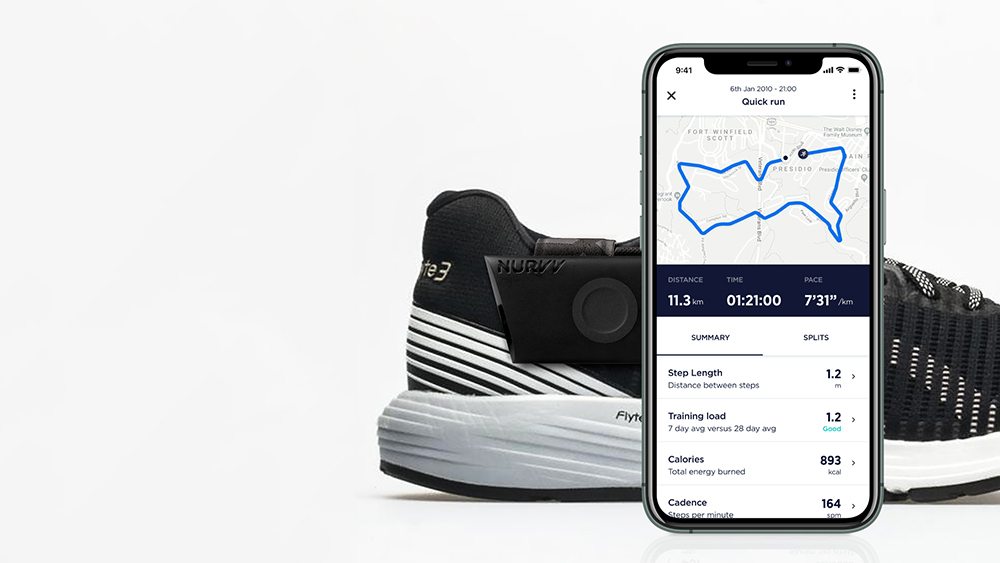
Courtesy of Nurvv
Brands also launched fitness accessories on a smaller scale, and we liked the , a pair of connected insoles that analyze how you walk, run and workout to provide targeted feedback on your form and training. NURVV says there are 32 sensors embedded into the insoles to capture data 1000 times per second. Download the accompanying app to instantly view and track your stats, from step length to cadence to balance.
NURVV says the app will take your data and offer tips “to help runners of all types run faster,” making it great for both casual runners and marathoners alike. Perhaps more importantly, the insoles can help you reduce foot fatigue, and they work with the app to warn you when you’re at risk for potential injury.
The NURVV Run insoles are available now and retail for $299.95/pair.
JBL L82 Classic Bookshelf Speaker
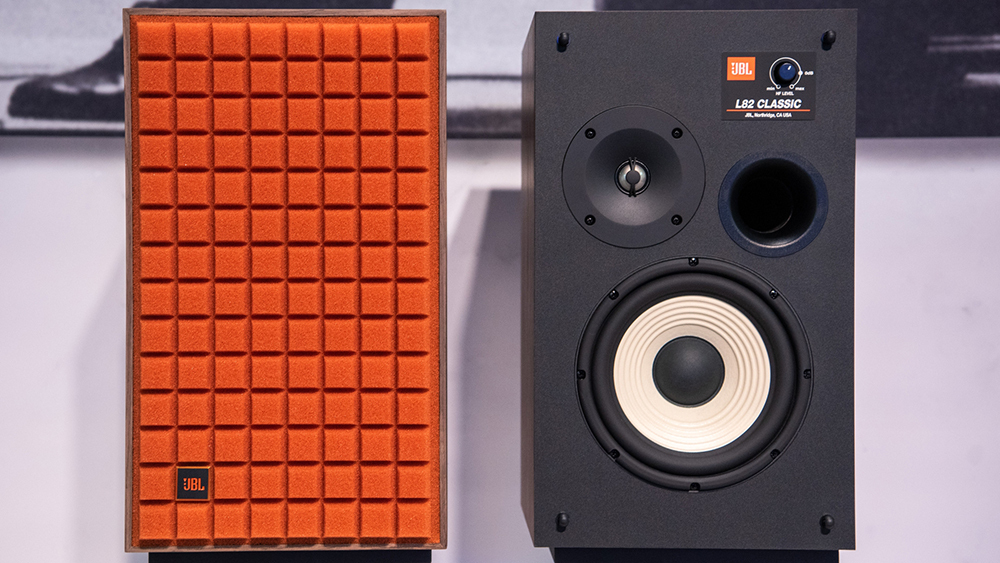
Courtesy of JBL
JBL has had a long and storied history with its wide range of speakers, but few pieces are as iconic as the company’s L100 Loudspeaker, with its Quadrex foam grille and bright, boisterous sound. First released in 1970, JBL says the L100s have become the best-selling speakers in the company’s history. This season, JBL launches its next generation of home audio, with the . It’s a contemporary take on the L100s, with warm, balanced sound in a smaller, 8-inch package.
The L82s retain many of the same retro design cues as their older, larger counterpart (you can choose to add black, orange, or blue Quadrex foam covers), and the parts are similarly configured as well (the L82s even use the same tweeter as the L100s). The main difference: the famous L100 sound now comes in a more compact package.
Pricing for the L82 speakers starts at $2500/pair and additional grille colors are $199/pair. The speakers are expected to hit stores in April.
Audio-Technica ATH-AWKT Headphones
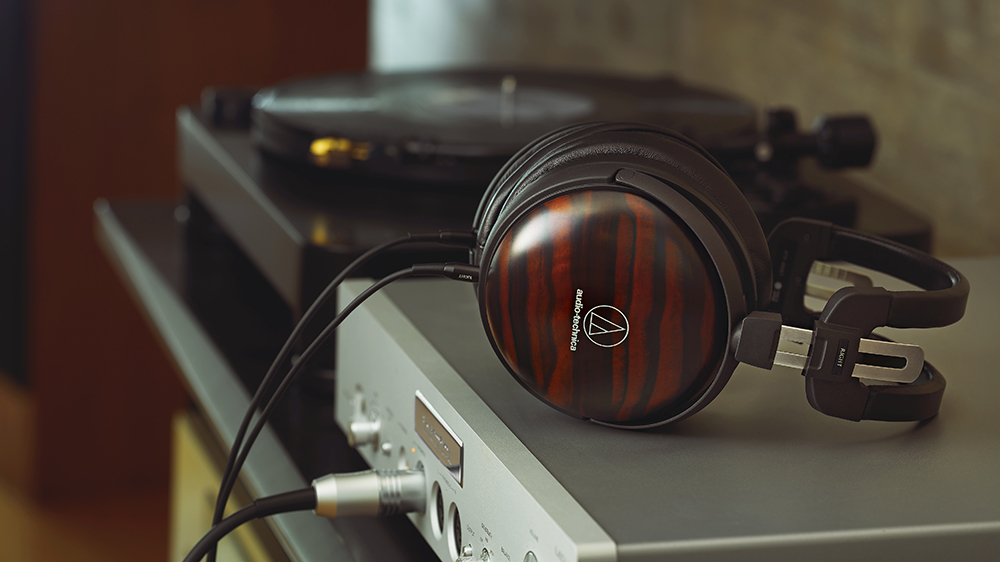
Courtesy of Audio Technica
Audio-Technica has long been known for their studio-quality gear, used by some of the top artists and sound engineers in the industry. But this season, they launched a premium offering for the audiophile set as well.
were the best looking––and best performing––wired headphones we saw all week, merging Japanese-inspired craftsmanship with precise technical details. The difference is apparent from the moment you hold the headphones in your hand, with luxurious cups carved from exotic “Kokutan” (striped ebony) wood, and a super soft sheepskin lining. The unique, open headband design provides a more flexible and breathable fit.
As for your listening experience, the sound profile on these cups is impeccably crisp and clean with no distortion. Great for hi-res listening, the headphones give you dynamic, accurate sound––just the way the artists intended. The ATH-AWKT Headphones retail for $1,899, and are due out in March.
Bosch Smartglasses Light Drive

Courtesy of Bosch
A pair of smartglasses you’d actually want to wear? That’s what is hoping with the debut of their “Innovative Light Drive” system, which combines an all-in-one technology stack with a lightweight––and dare we say, stylish––pair of specs you could wear all day.
On-board cameras and sensors are kept discreet, allowing for a more streamlined frame that’s a welcome respite from the clunky smartglasses currently in the market today. The tech is also kept minimally intrusive—you’ll be able to view directions and text messages in your line of sight while you’re driving, but a quick tap to the temples will turn them off. Making a meal at home? Send your shopping list to your smartglasses so you can quickly pick up what you need at the store, then view the recipe in front of your eyes as you prep, eliminating the need to scroll through your phone or cookbook.
The Light Drive system delivers a crystal-clear visual experience with images that are always in focus —even in direct sunlight. It’s a completely turn-key solution too, with Bosch looking to work with eyewear designers to seamlessly integrate the technology into more styles and silhouettes.
A spokesperson says the Bosch Smartglasses will be available beginning next year; the company has yet to share pricing info.
Wallbox Pulsar Plus EV Charger
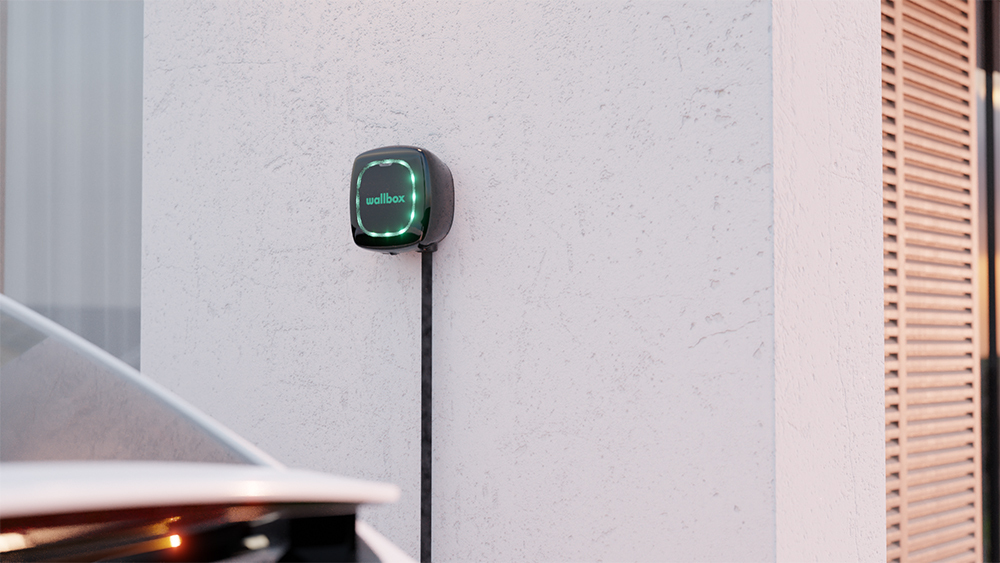
Courtesy of Wallbox
A number of companies unveiled electric vehicles at CES 2020, including Audi’s AI:ME concept car and Fisker’s long-awaited debut of its “Ocean” EV (due to hit the road next year at a wallet-friendly $37,000).
But while electric cars were aplenty, it was Spanish company, Wallbox, that earned a second look for its chic and minimalist charging stations, which made its US debut at the show. We liked the “,” which is roughly the size of a smoke detector, and packed with a ton of intelligent features (think: Bluetooth and WiFi connectivity, integrations with voice assistants, and the ability to start, pause or monitor charging from your connected devices). It hooks up easily in your garage to provide secure, seamless charging for virtually any EV on the road today.
Next on the company’s roadmap: Wallbox’s “Quasar,” the world’s first bi-directional electric vehicle charger for the home. With a focus on using energy more effectively and efficiently, the Quasar will charge your car, or use its battery to store and send power back to the grid. The bi-directional charging also serves as an emergency power source, by harnessing electricity from your car battery if the lights go out at home.
Wallbox plans to launch the Pulsar Plus in the US this summer and Quasar by the end of the year. The Pulsar Plus will be priced at $649 and the Quasar is $4000.
NIU RQi-GT Electric Motorcycle
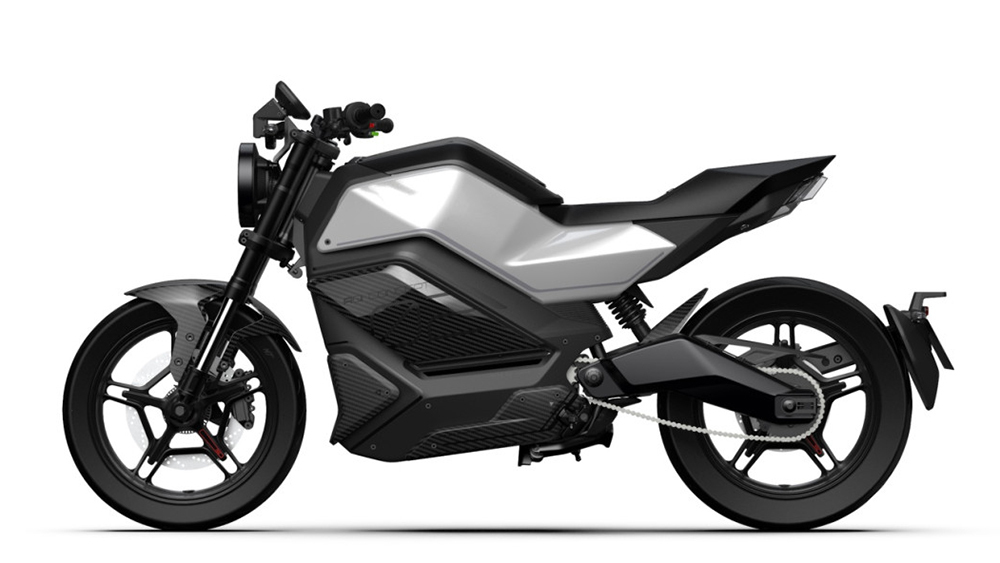
Courtesy of Niu
Chinese-based electric scooter company, , drew crowds this week with its RQi-GT Electric Motorcycle. The fully electric bike gets up to 80 miles per charge with a top speed of 100 mph (you’ll need a motorcycle license to drive this baby). Power comes from two removable batteries with a combined capacity of 7 kWh.
Onboard features will include 5G connectivity, a full-color dashboard display, and Bluetooth and GPS functionality, which lets you monitor mileage, tire pressure and track your bike’s location from your phone.
NIU also debuted a covered three-wheeled electric scooter this week. The golf cart-like design of the NIU TQi-GT, isn’t for everyone, but with a top speed of 50 mph and range of up to 150 miles per charge, this three-wheeler has got a ton of pep for its size.
NIU says both vehicles are expected to go into production for the US later this year. Pricing has yet to be announced.
Keurig Drinkworks Home Bar
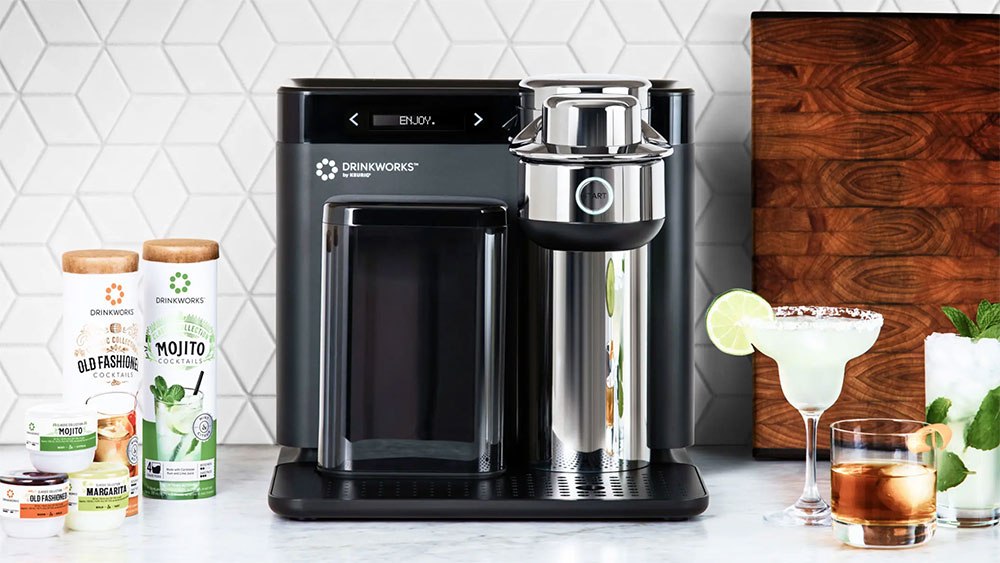
Photo: Courtesy of DrinkWorks
One of the most popular gifts this past holiday season brought the party to CES early, with Keurig launching the latest version of their “” at the Pepcom media showcase the night before the show.
Like a Keurig coffee maker but for cocktails, the Drinkworks machine uses specially created “drink pods” to churn out dozens of different cocktails in seconds. Each pod contains pre-measured spirits infused with all-natural flavorings and juices, to make everything from classic margaritas to a surprisingly stiff Moscow Mule. There are even pods for wine and hard cider. What we like: the machine includes two CO2 cannisters for drinks that require a little fizz. All you need is ice.
Cocktail connoisseurs will still want to make their own drinks, but for convenience and consistency, this home bar can’t be beat. $299 on Drinkworks.com.
Synca Kagra 4D Massage Chair
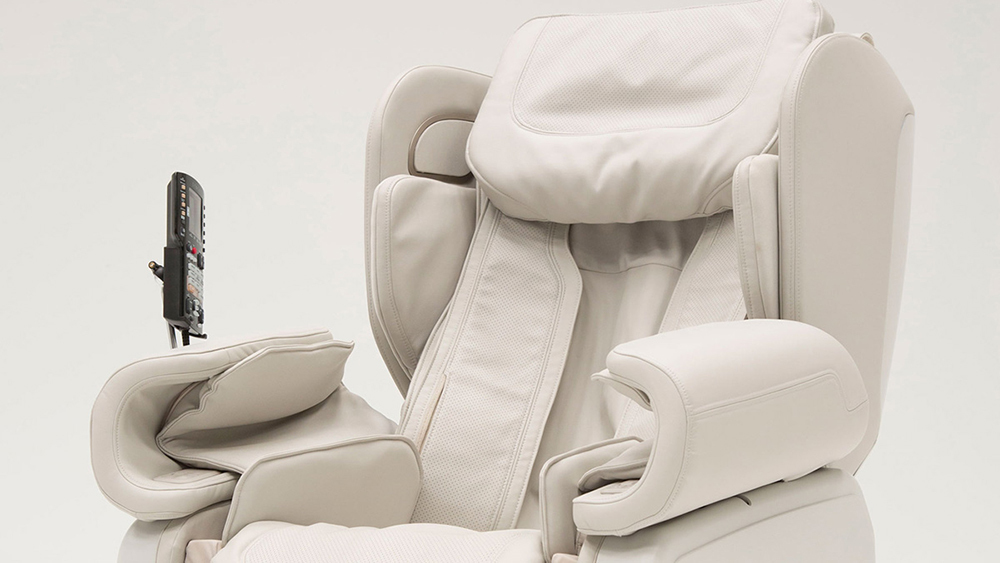
Courtesy of Synca
Perhaps the most welcome 30 minutes of our CES experience came when we sunk into this for a soothing and relaxing massage. With clean lines and a minimalist construction, the handsome massage chair won’t look out of place in your living room or den. Speakers in the headrest lull you to sleep, while multiple pulse points deliver a Shiatsu-style foot and full body massage, all customizable via the included remote.
The “4D” designation refers to the chair using rhythmic vertical, width, and depth motions with kneading in all directions, to better mimic human hands. Synca’s “zero gravity positioning” lets your body melt into the chair without tension, for more natural positioning and a more comfortable experience. The massagers are super “grippy,” clinging to your stress points to attack them section by section, so you leave refreshed, rejuvenated and ready to take on the day.




